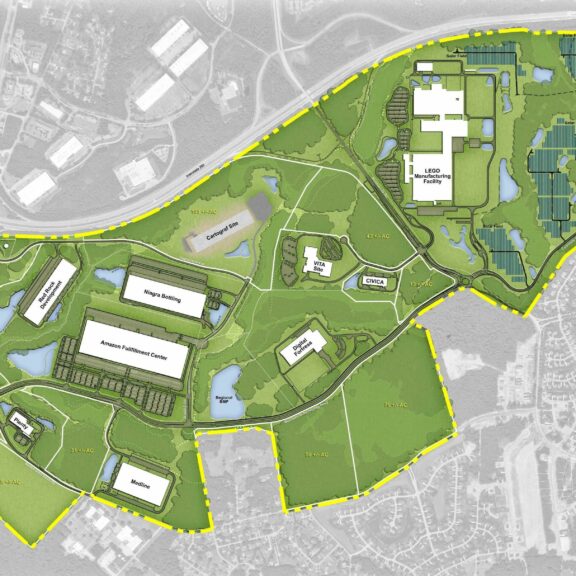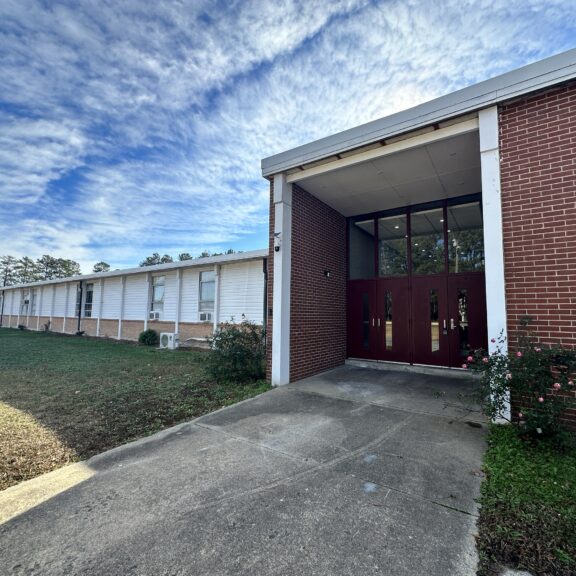April is Landscape Architecture Month. It’s the perfect time to celebrate growth, budding flowers, and newly planted garden beds and trees. However, along with the beautiful blooms, the month also brings tax season, spring cleaning, stressful vacation planning, and—my personal favorite—allergies. So, naturally (and not so ironically), April is also Stress Awareness Month.
But there’s good news! There are many stress reducing qualities in taking a walk through your neighborhood or a local park, especially if you’re there to admire the landscape architecture! I was in need of a stress reducing walk myself, so I grabbed my allergy meds and took my pup on our daily walk through a ‘fan’ favorite neighborhood in Richmond: The Fan.
The Fan Area Historic District (AKA The Fan, for short) is a 228 acre residential district within city limits that boasts a variety of historic rooflines, hidden boutiques and salons, diversely colored townhomes, architecturally grand churches, and one-of-a-kind corner cafés among many other unique attributes.
The Fan, so named because of the way its streets stretch into a fan shape throughout the city, is home to a vast array of landscape architecture as well. The district’s Edwardian and Colonial Revival homes sit closely to the sidewalks, so clever and thoughtful landscape architecture is a must.
As it turns out, there are quite a few plants and trees that exist not only to enhance the look of a neighborhood’s landscape. Landscape Architects intentionally select these plants because they also assist industrious pollinators, use the correct amount of water for the soil they’re planted in, filter stormwater before it enters our sewers, and are hearty through the seasons they’ll endure.
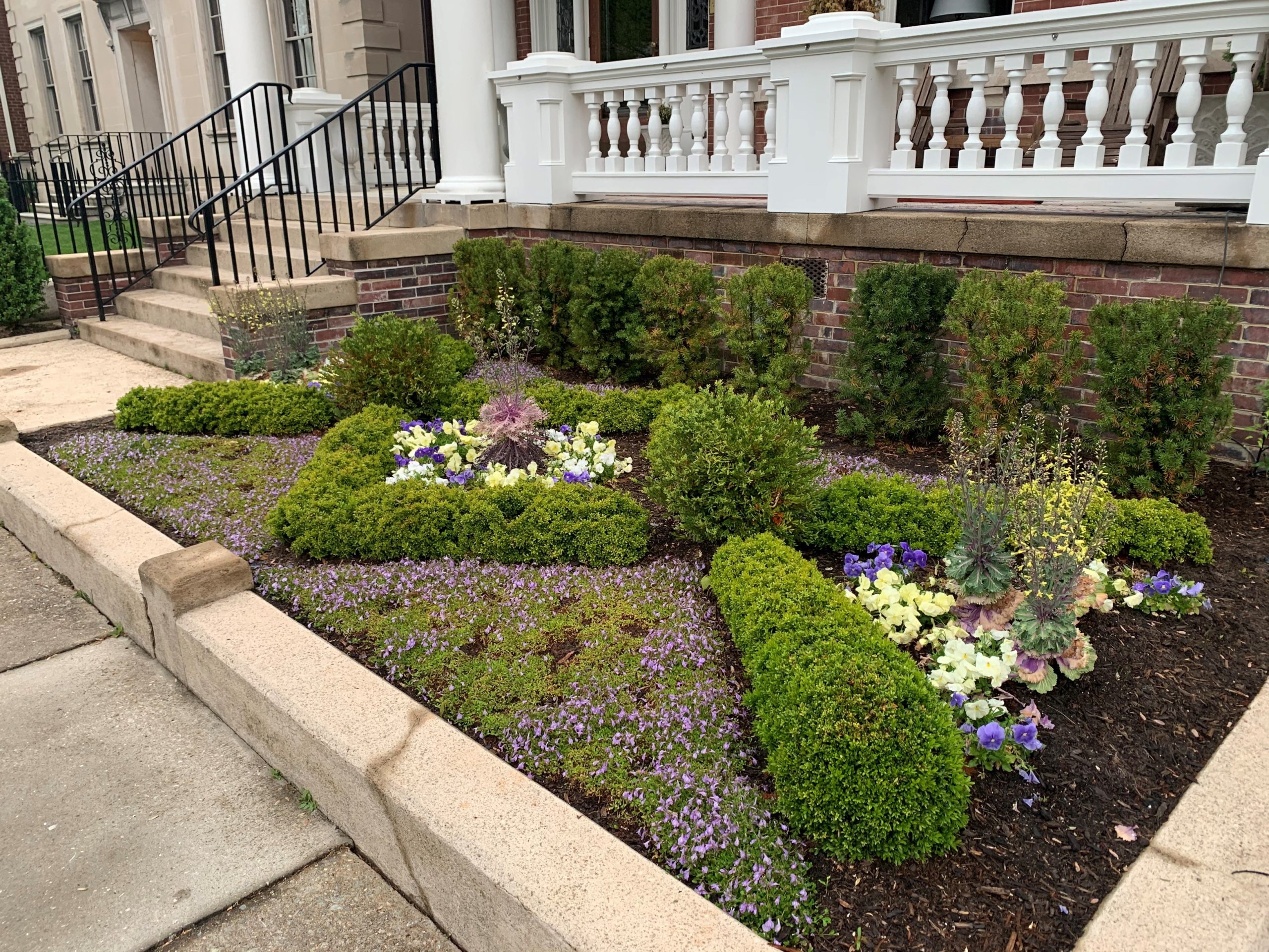
A home on Monument Avenue boasts a bed of creeping phlox, pansies, and ornamental cabbages.
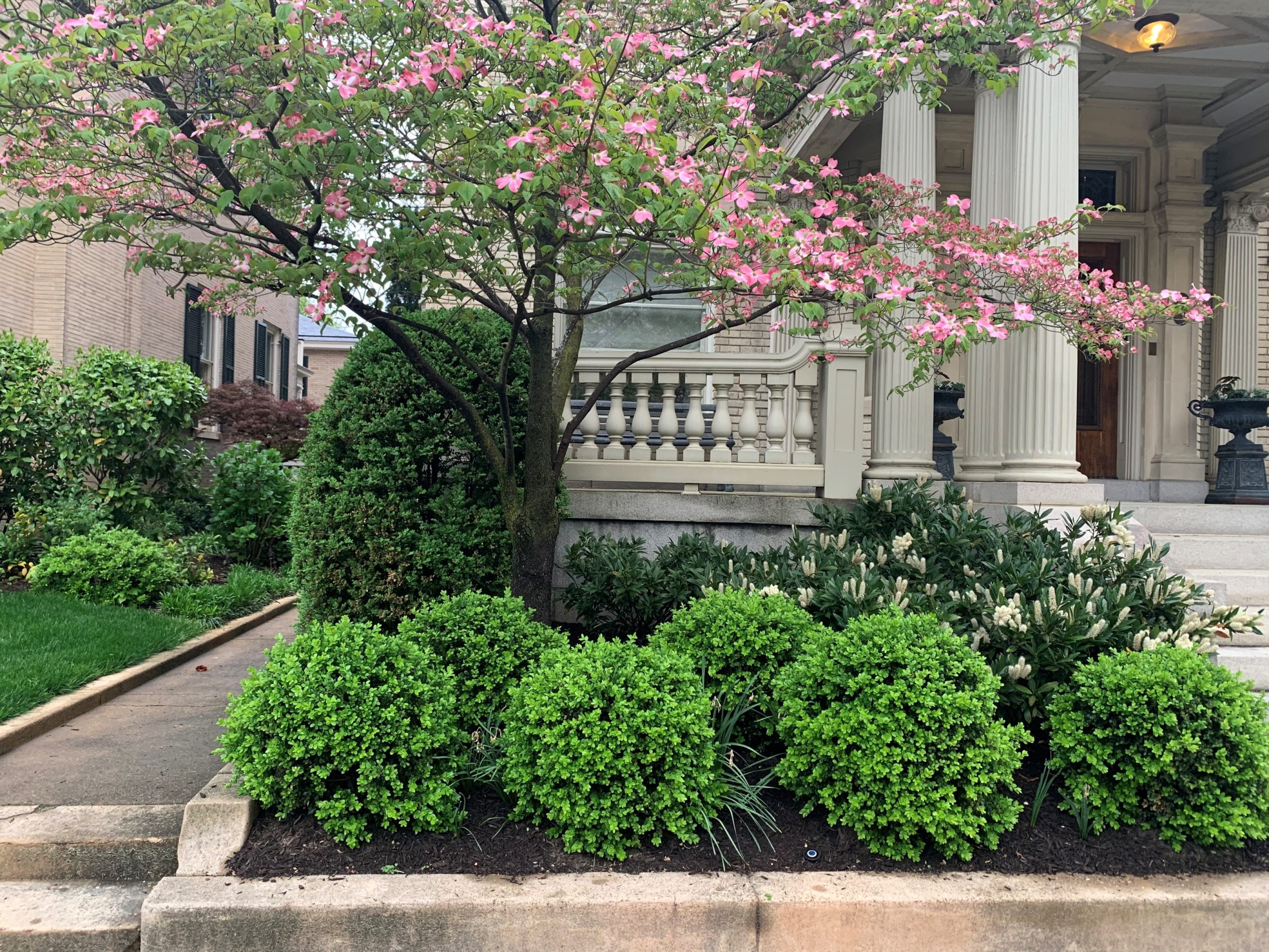
This Colonial Revival style home presents a pink flowering Dogwood tree, boxwood shrubs, and a cherry laurel bush.
My pup Seamus and I walk through The Fan regularly, sometimes upwards of five miles a day. We see a lot of plants and trees and we always take pictures. Though I can manage to research and figure out what most of these Fan-based plants are, there have always been a few that I’ve had trouble identifying. So, I asked two members of our Landscape Architecture team, Neal Beasley and Julie Murphy, for help identifying a few favorite plants from our walks.
Neal earned his BS in Landscape Horticulture from North Carolina State University and has been with Timmons Group since 2005. He is a Certified Horticulturist, ISA Certified Arborist, and licensed Virginia Landscape Architect.
Julie has been with the firm since last spring. She earned a Bachelor of Landscape Architecture from North Carolina State University and holds an MA in Urban and Environmental Planning from UVA. Julie is a licensed Landscape Architect in North Carolina and Virginia.
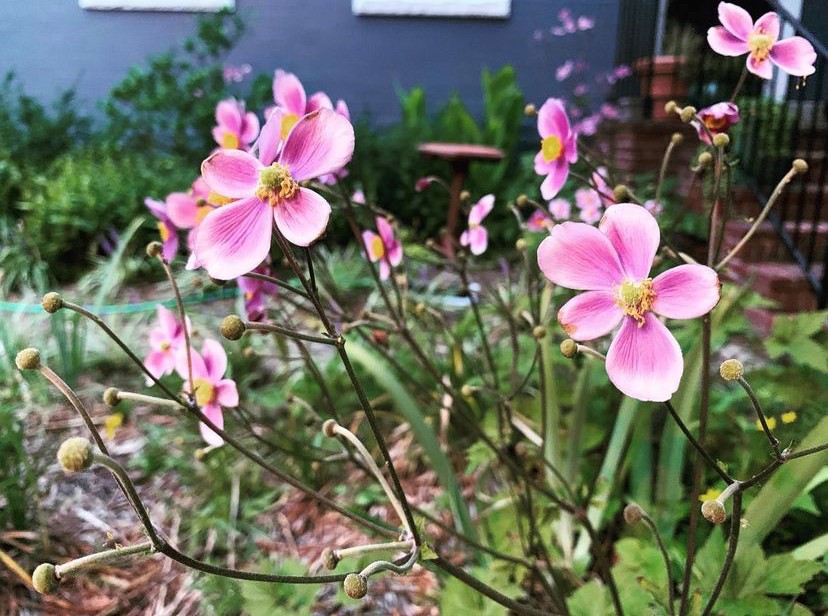
Neal identified these blooms as Japanese anemones and said they’re a great perennial plant for a semi-shaded area.
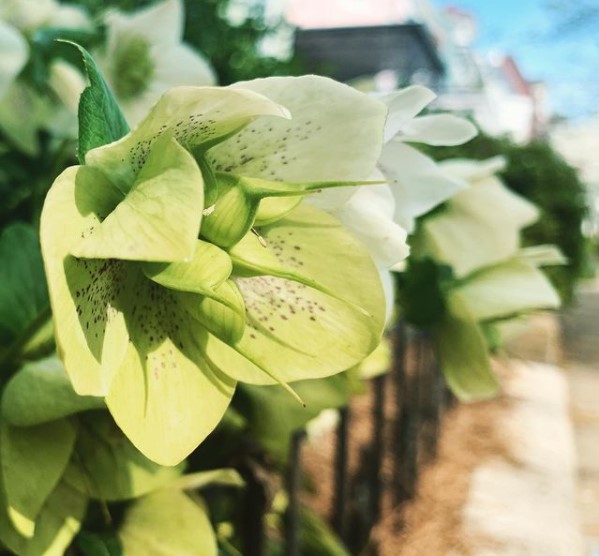
Requiring little maintenance, the lenten rose is a hearty and forgiving plant with blooms that appear in late winter and stick around through early summer.
“From designing neighborhoods and advising on zoning codes to designing detailed plant selections along a sidewalk, there are landscape architects involved at almost every scale of our built environment,” Julie says. “When we design a landscape, we keep many things in mind, including ecology, sustainability, sun and shade patterns, species suitability, species diversity, soil conditions, water access, stormwater management, ease of upkeep, as well as the human experience of landscapes and aesthetics. You can see the result of all these considerations walking around a neighborhood like The Fan.”
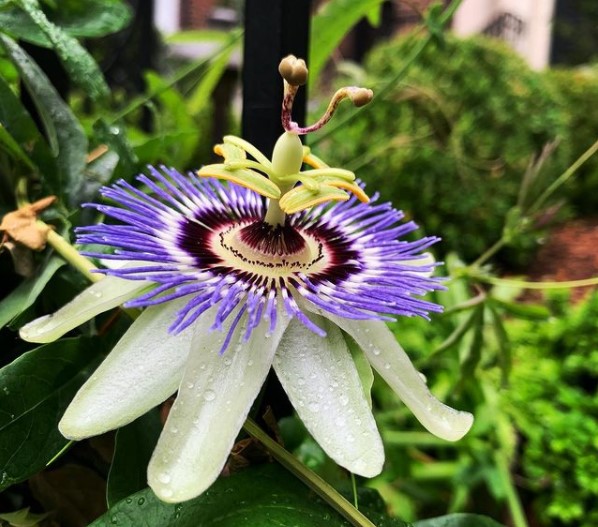
Julie identified this unique bloom as a passionflower. “Incorporating native plants like the passionflower into gardenscapes is a priority for landscape architects because they’re often the most well-suited to a particular site’s climate, soil, and rainfall, and they require less upkeep. They also provide habitat to essential native pollinators, which helps our farms and forests bloom, produce fruit, and thrive,” Julie says.
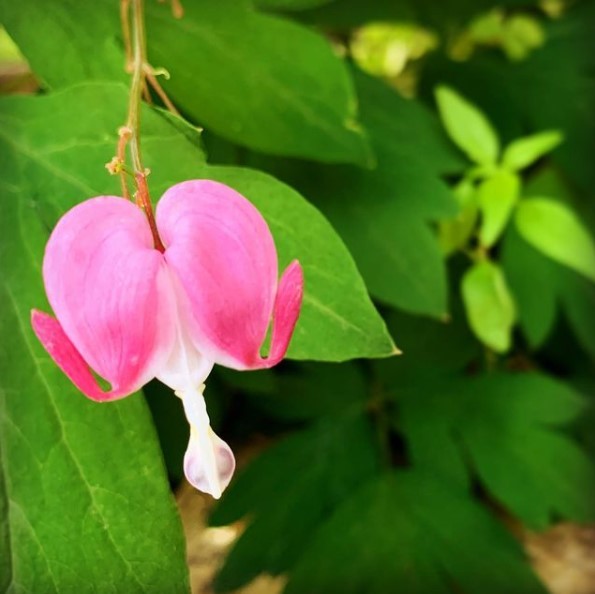
The bleeding heart is a unique perennial flower that thrives in shady landscapes and doesn’t require much maintenance other than the occasional cutting back during season changes.
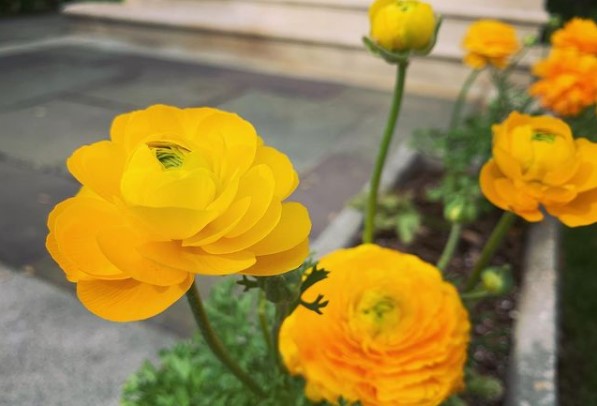
Neal identified these sunshine yellow flowers as ranunculus, also known as buttercups. These flowers are very attractive to pollinators and are easily kept in containers or in the ground.
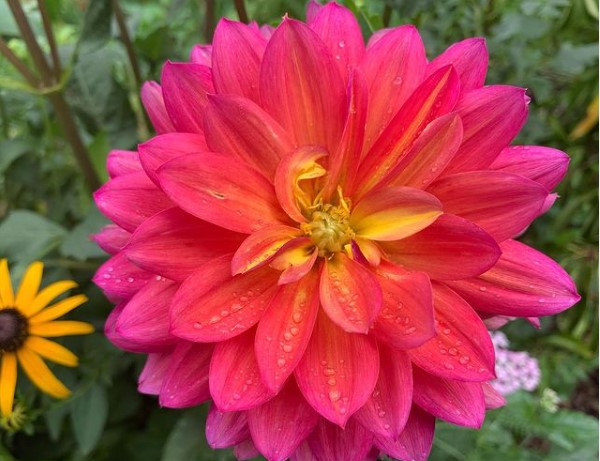
This stunning sunset beauty is a dahlia flower. Dahlias can be finnicky but do best in mulched garden beds with direct sunlight.
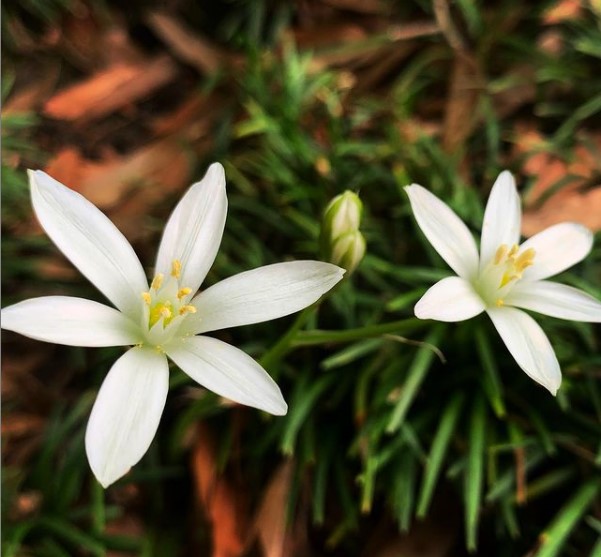
Neal says these small white blooms are rain lilies, also known as zephyrlilies. They’re native to North America which makes them a perfect ground cover for those wanting to consciously incorporate indigenous plants into their landscaping.
“As you walk through The Fan, you can see what the original city designers intended with large street trees and small front setbacks—increasing walkability and shade and providing room for residents to customize their yards to their own liking,” Julie says. “The trees and yards you see provide a place for stormwater to filter through before it reaches our city’s storm sewers. This improves water quality, enhances air quality, and reduces urban heat through shade and respiration.”
Julie and Neal really took the stress out of plant identification for me! They are amazing additions to our Timmons Group Landscape Architecture team and are chock full of knowledge regarding all things landscape.
So, next time you take a stress reducing walk through your neighborhood, check out the local landscape architecture and notice what foliage is included in the design and where everything is planted. They might be more than just beautiful blooms—these plants were designed to attract pollinators, diversify the local ecosystem, filter stormwater, and appeal to our aesthetic.
“Of course, they are also beautiful and relaxing to look at,” Julie says. “Scientific studies have even shown that taking a walk among trees reduces the stress response in our brains!”
Who knew that landscape architecture could be so relaxing!



